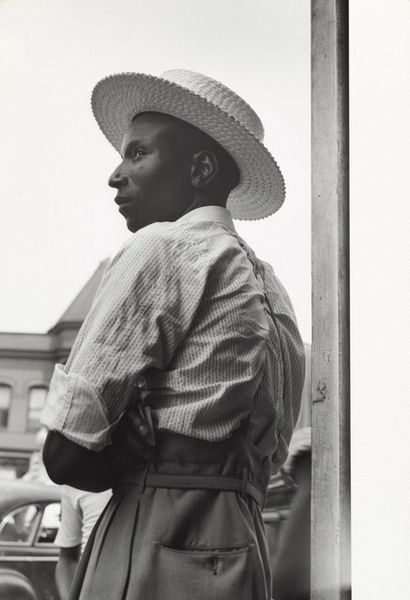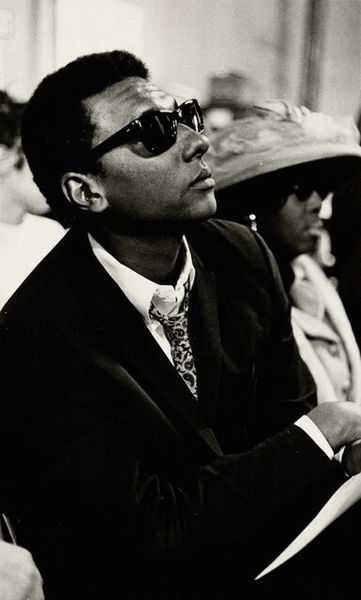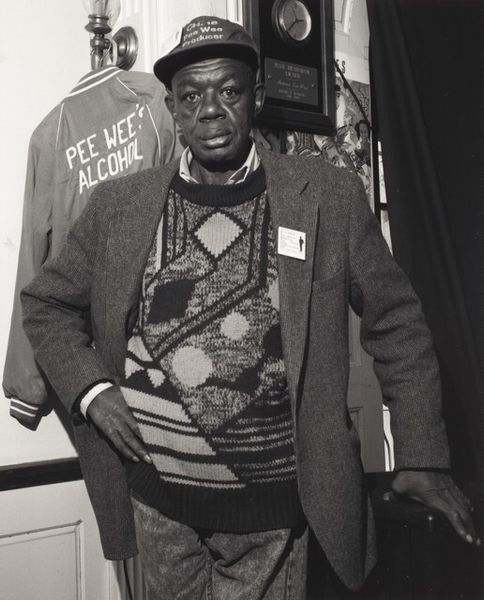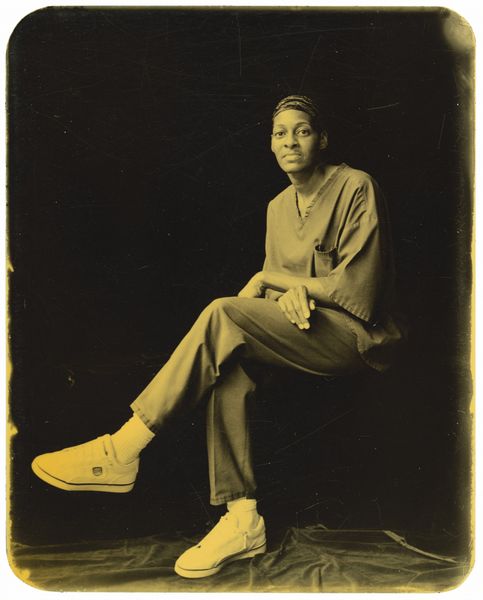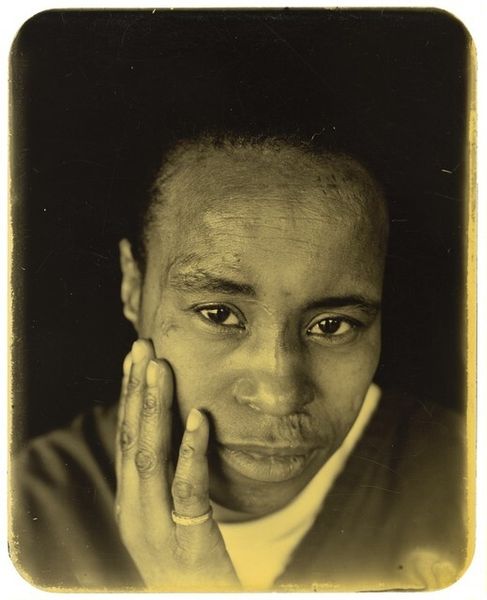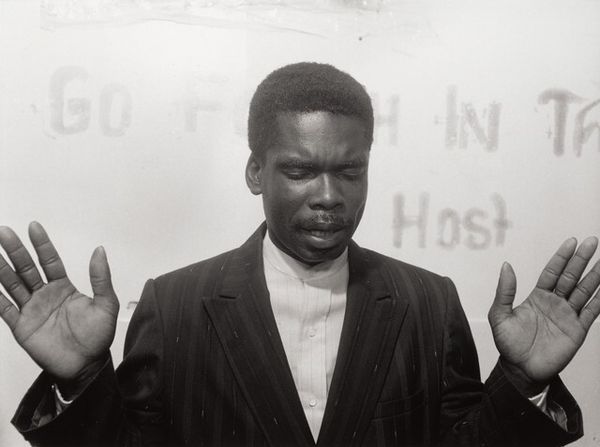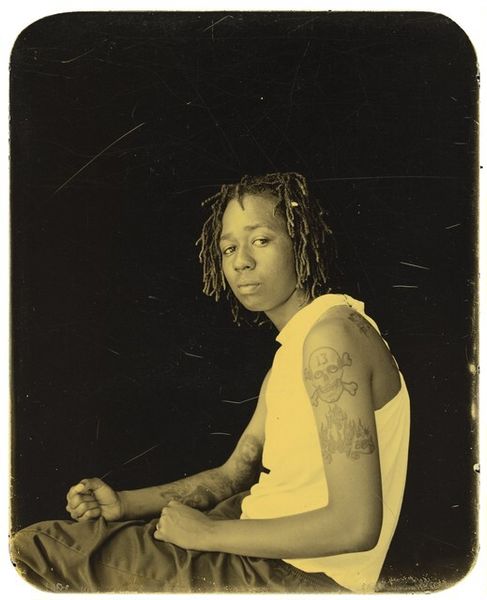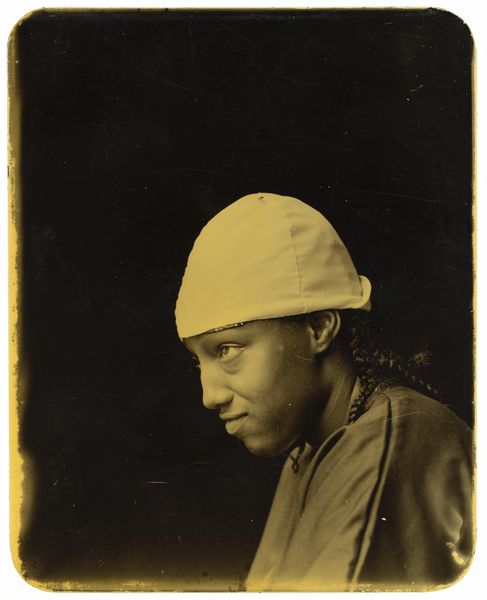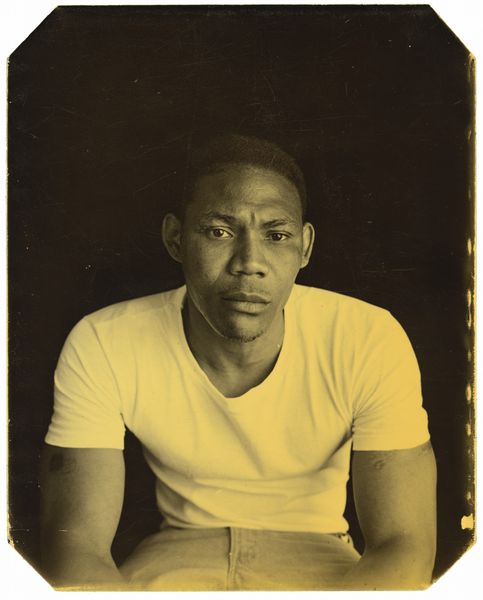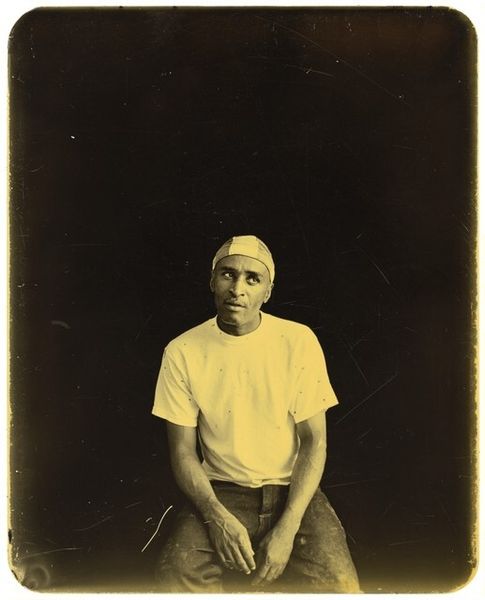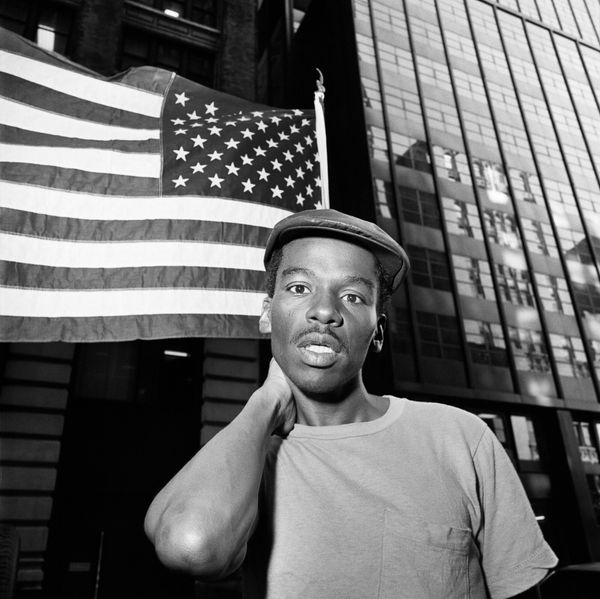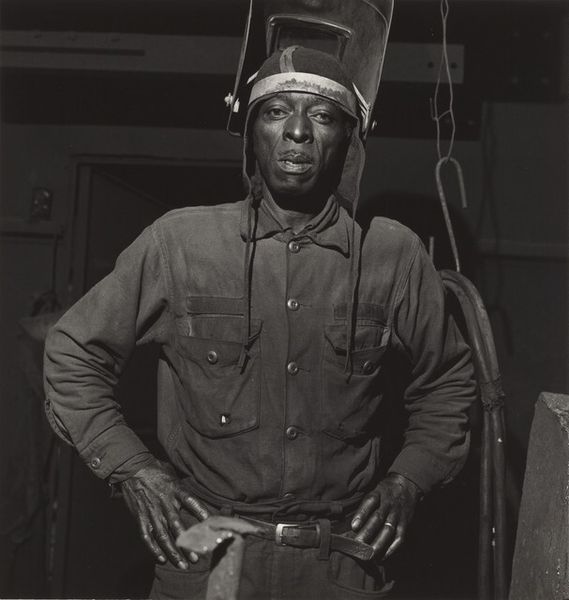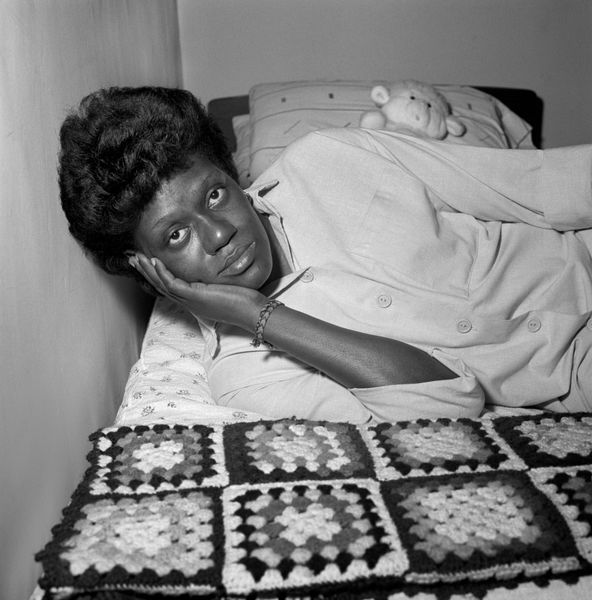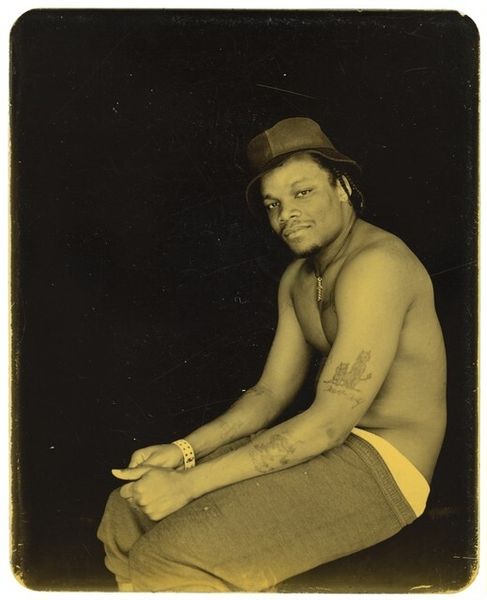
photography
#
portrait
#
black and white photography
#
street-photography
#
photography
#
black and white
#
monochrome photography
#
monochrome
#
monochrome
Dimensions: image: 80.01 × 80.01 cm (31 1/2 × 31 1/2 in.) sheet: 108.59 × 101.6 cm (42 3/4 × 40 in.)
Copyright: National Gallery of Art: CC0 1.0
Curator: Rosalind Solomon captured this image, titled "New York," in 1987. What are your initial thoughts on the piece? Editor: It's the starkness that grabs me. That high-contrast black and white photography really pushes the texture forward – the knitted cardigan, the stone of what looks like a public sculpture in the background. You feel the materiality right away. Curator: I find the composition equally striking. The man’s gesture—his hands almost forming a pyramid—anchors him. There’s a suggestion of ritual or a personal signifier, doesn't it evoke something meaningful? Editor: Potentially, although I'm wary of imposing meaning without more context. Instead, I am interested in the immediate context of image making in documentary practices. The labor inherent in producing these prints, especially back then. Curator: Precisely, but don’t you see a duality at play? The rough urban setting contrasted with his hand position and the adjacent statue gives an ancient quality to a city usually concerned with only the present and future. Perhaps a link between the past and present through visual signifiers. Editor: I think you may be right. His pose and the statue also give off a collaborative aspect, but the immediate starkness makes me also question who Rosalind Solomon sought out for portraiture and which communities have a stronger or lesser voice to express identity and individuality. Curator: It’s a portrait layered with these contrasts, and that creates such visual intrigue. The way Solomon has framed this moment; it tells a far larger story of humanity, class, race, and context. Editor: Absolutely, Solomon forces you to engage not just with the subject, but with the processes and contexts that shaped both the subject and the image itself. A worthwhile reminder.
Comments
No comments
Be the first to comment and join the conversation on the ultimate creative platform.
